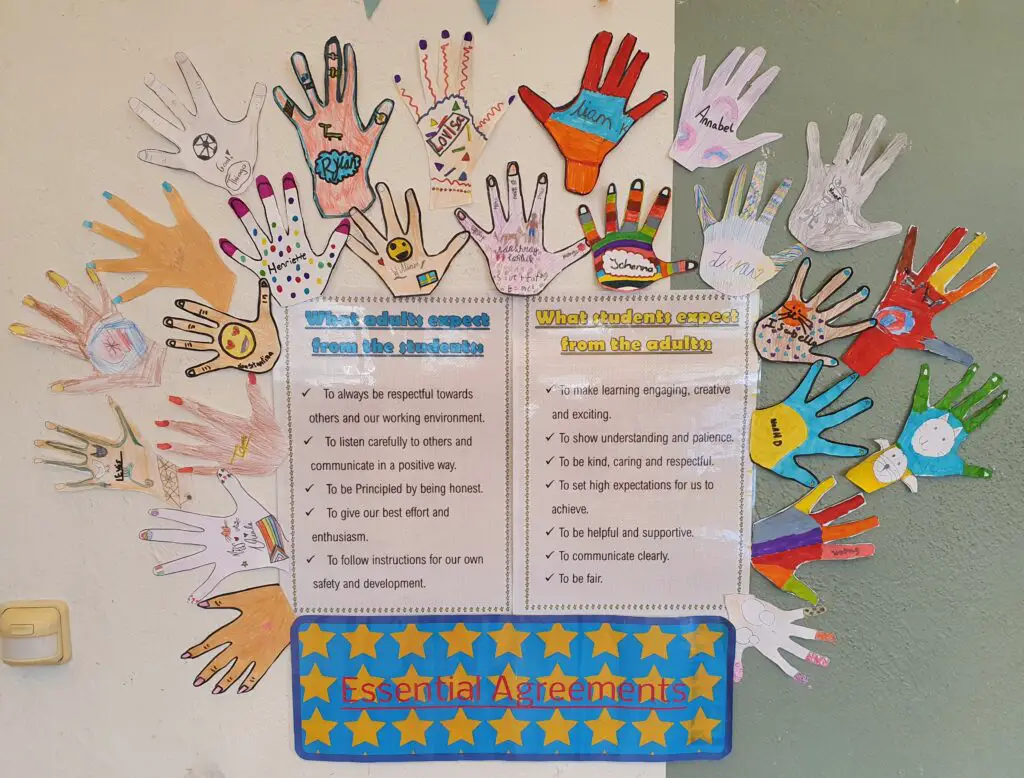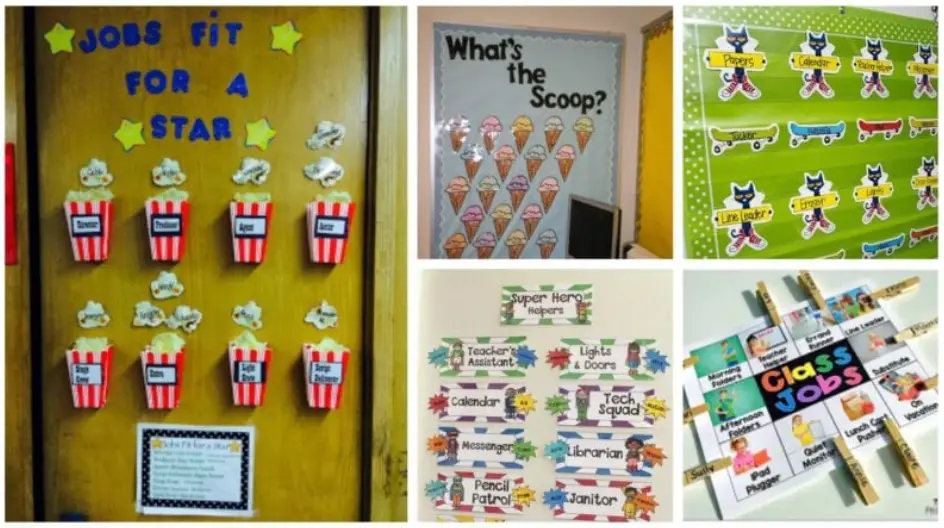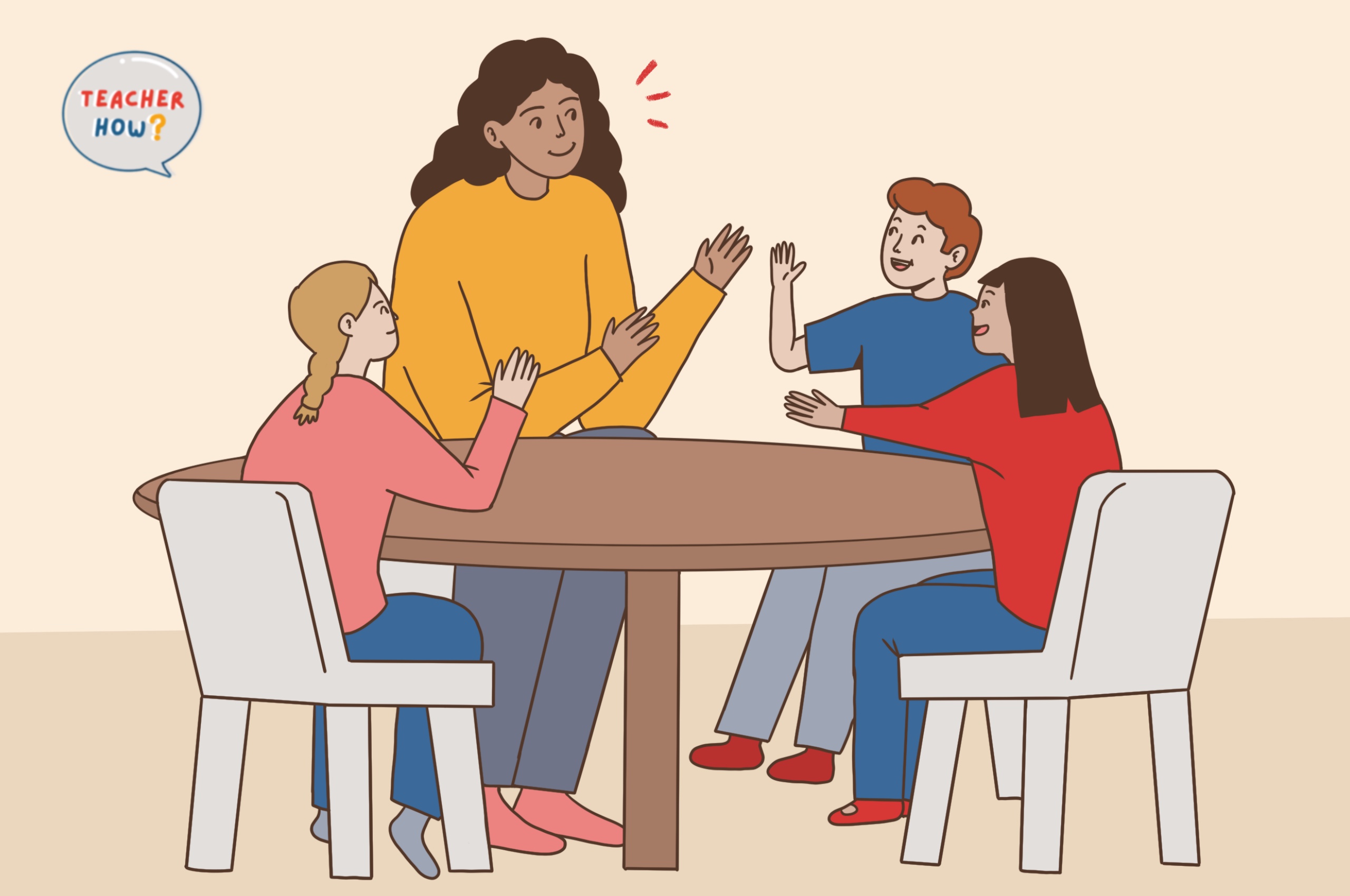A study by the Economic Policy Institute concluded that good teachers are essential influencers in a child’s life, right from the classroom to future achievements. Unquestionably, each of us had a favorite elementary teacher that left a positive mark on our lives. But what made them so influential, and how can you have the same impact on your students?
You’ll be a good elementary school teacher if you’re great at communicating and listening. You should also be caring and approachable, be able to foster good relationships among students, and be enthusiastic in everything you do. Additionally, you should be able to adapt to the ever-changing environment.
If you’re thinking about a career in education but wondering if you’ll make a good elementary teacher, this post is for you! I’ll go over seven essential qualities that define excellent elementary teachers and include tips on how you can develop and enhance these strengths. Let’s get started!
1. You’re an Excellent Communicator
You may assume that the essential quality of a good elementary teacher is being knowledgeable of the subject matter: After all, being a teacher is about sharing your knowledge and expertise. But what’s the use of having the knowledge if you can’t convey it in a manner your students will understand?
Whether verbal, non-verbal, or visual, your communication ability should be adequate for better learning experiences and outcomes.
A good communicator can also read the class to know whether or not they’ve grasped the learning. If it’s apparent that the students haven’t, the teacher should be flexible and creative in finding alternative ways to convey the material.
Various studies show that an educator’s communication abilities play a significant role in a student’s academic performance.
Students partaking in the study by Alamgir Khan et al. (2017) declared that they learn considerably better from teachers with good communication skills. Another study by Loss J. (2000) deduced that good communication strengthens the teacher-student relationship and enhances the level of understanding among them.
Therefore, adopting good communication skills is crucial to becoming an excellent elementary school teacher.
2. You’re a Good Listener
In any classroom situation, expecting learners to be attentive to their teacher is normal. But what about the other way around? Should teachers listen to their students?
Being a great communicator is not enough. You should also pay attention to your students for effective communication to occur. Listening is a give-and-take: Both you and the student should be attentive to each other. Active listening skills for both parties translate to effective learning in the classroom.
To be a great elementary teacher, you’ll need to adopt good listening skills for the following reasons:
- Being a good listener helps you understand your learners better. You can pick up on their strengths, interests, and even anxieties just by paying attention. This way, you will be better positioned to structure your lessons in a manner they’ll learn best.
- Effective listening helps build better relations by creating a safe space for students to confide in you. If a child feels listened to non-judgmentally, they can trust you with their secrets, needs, and problems. They’ll become freer with you, fostering openness.
- When learners feel their voice matters, they’re more likely to be actively involved in the learning process. Students will freely provide feedback which can be useful in improving your teaching strategies and enhancing the overall classroom experience. Incorporating Student Voice allows pupils to take ownership of their learning, thus becoming more committed and motivated in reaching learning objectives.
Tips on How To Become a Better Listener
If you’re wondering how to become a better listener, here are a few tips to practice:
- Pay attention to what your student is telling you. This may require you to stop what you’re doing and listen. Multi-tasking while conversing with your students may inhibit effective listening.
- Listen without judging. Refrain from interrupting the student with judgments or comments. However, if you must comment, do it in a more positive and supportive manner.
- Indicate that you’re attentive by using non-verbal cues. This may include maintaining eye contact, nodding your head, etc. Using non-verbal cues helps learners know that you’re interested in whatever message they are conveying.
- Give your students a chance to elaborate by asking them open-ended questions. Asking follow-up questions shows that you are listening carefully to the speaker and that you care about what they are saying. Furthermore, it will help you understand their thought processes and feelings with clarity.
- Listen patiently. Try not to rush conversations with your learners. If you’re restricted by time (which is typical for most teachers), it’s best to tell your student that you will follow up the conversation with them at a later time – and make sure you do!
Always respond positively even when they give incorrect answers or ask off-the-subject questions. You should aim to create an atmosphere where your learners are entirely comfortable sharing their thoughts or asking questions. And this starts with good listening skills.
3. You’re Approachable
Imagine a classroom situation where children fear approaching and talking to their teacher and view their teacher as grumpy and mean. Will these children learn much?
It’s your job as a teacher to facilitate the learning process, which is only possible if you’re easily approachable. A pupil’s questions regarding a topic will remain unanswered if they find it intimidating to talk to you. It’s daunting for them not to be able to ask for help regarding a new concept they find difficult to grasp.
A good teacher should therefore exhibit a welcoming and approachable aura.
Tips on How To Make Yourself More Approachable as a Teacher
Being more approachable is essential as a teacher, and there are many ways you can work to become more approachable.
Be Available to Your Students
This doesn’t necessarily mean you should be available to them around the clock. Instead, make known your availability and how they can get hold of you during and outside classroom hours. Consider informing them when you’re free. You can simply say, “I’ll be in my classroom after the lesson if any of you wants to talk to me.”
Incentivize the Process
Consider giving incentives to children who approach you to encourage others to take advantage of the opportunity.
For example, try offering praise to those who approach you for support. Tell the class how happy you are with the students seeking help. This could go a long way in making your pupils feel free to approach you.
Use Humor
Teachers have important responsibilities to uphold, and for the safety and development of pupils, these responsibilities should be taken very seriously. However, that is not to say that teachers cannot use humor in the classroom.
You can refer to topics students find amusing, like a video or cartoon. Promoting laughter puts everyone at ease and allows your students to see you as a fun and likable teacher.
Note: Be careful with how you practice humor. Your words and actions must always be age-appropriate and should never make others feel victimized or bad about themselves. What you might consider a joke may be hurtful to someone else.
Another way to show friendliness is by initiating conversations with your pupils outside of class. Interact with students during recess or those who come to class early, including talking about random topics. This way, you’ll lower the threshold for students to approach you.
Teachers create the environment in the classroom by how they interact with the children in their class. Being approachable will foster good relationships. As a result, learners will feel comfortable around you and can easily come to you with any issues and challenges.
4. You’re Kind and Caring
Students are vulnerable, especially the younger children in elementary school. They’re put in unfamiliar situations without their parents to lean on, and some students may get frustrated if new concepts don’t come easily. Therefore, you must be a source of kindness and care in their life.
Tips on How To Show Kindness and Be More Caring as a Teacher
Here are some ways that you can practice and show a caring approach in your classroom (and encourage your students to practice kindness, too):
- Be gentle and encouraging when someone makes a mistake. Students can be disorganized and often make mistakes, such as spilling a drink, talking out of turn, or otherwise breaking a rule. One way to show kindness is to be understanding and gently bring the mistake to the student’s attention instead of yelling or harshly criticizing them.
- Give your students compliments. Regularly complimenting your students is a great way to demonstrate kindness. Simply giving positive reinforcements such as “That’s a great idea!” or “Great observation!” can instill confidence in your students and increase your likability and trustworthiness in their eyes.
- Challenge yourself and your students to perform at least one random act of kindness daily. If you challenge yourself to carry out an act of kindness every day, you’ll become a more genuinely kind person and model good behavior for your students. You can also challenge your students to perform their own acts of kindness and keep a running record, like a kindness diary, to measure and celebrate their accomplishments.
If you are kind and caring, your students will feel valued, more comfortable around you, trust you, and will most likely behave better in the classroom. Therefore, possessing these qualities indicates that you’ll be an excellent teacher, especially at the elementary level.
5. You Exhibit Community Building Skills
A good elementary teacher understands the significance of fostering healthy relationships in the classroom. As the leader, you should have the skills to create a positive classroom community that’s collaborative and supportive of each other. A community where each student feels important and accepted by the rest.
Numerous tools for building a classroom community exist. I’ve found these two strategies particularly helpful:
Co-Creating Agreements
At the beginning of each year, collaboratively make a list of agreements on how students should behave in class and towards each other. The students would discuss in groups, share their views with the class, and eventually vote to condense the list into a few manageable points. Then, pin these points on a wall in class for easy visibility.

If anyone fails to abide by the agreements, review the list with them and spark a conversation. This way, each learner sees themselves as part of a little community and understands how their conduct affects the rest of the community.
Assigning Tasks To Every Student
Children feel proud when they’re given special roles. They feel they’re valuable contributors to the class community with job titles. Consider assigning each of them a simple task.
For instance, you can appoint the student as a group leader or speaker in discussions. So they’ll offer instructions on your behalf or present the group’s findings in front of the class.
Many jobs can be delegated to students, such as assigning the task of collecting and distributing books. For an added incentive, make a deal with the student that if they do a great job with the books, they will be ‘promoted’ to handling more valuable equipment, like laptops.
You can rotate tasks monthly, ensuring no one gets the same role twice. This way, each child develops confidence and independence in initiating and carrying out even the toughest of tasks.
Why not make this point come to life with a ‘classroom job chart’ display? Check out the article below for ideas on how to get the best out of delegating responsibility and leadership to students.

6. You Show Enthusiasm
Truth be told: Teaching is a stressful job. Every teacher has encountered not-so-great days in the classroom. But a good teacher shouldn’t let those days show. They should face the class with enthusiasm every single day despite the hurdles. This can even be tougher for elementary teachers, as they interact with the same class of students every day.
In essence, enthusiastic educators positively affect how their young learners view the learning process and the school environment.
Research shows that teacher enthusiasm has a remarkable impact on students’ classroom engagement. The learners become more emotionally, mentally, and physiologically engaged when the teacher is more exuberant and dynamic.
Children take note of simple things like tone and body language, and learners are generally inclined to mirror and reciprocate their teacher’s attitude. So, when the teacher is uninterested and unmotivated, the learning process will most likely be devalued.
This is why, as a teacher, you should always show enthusiasm in class (whether genuine or not). Perhaps you could use advice from the drama department on how to gesticulate energy, even when you don’t feel it, to keep your students motivated. Treat the classroom as a stage to showcase your performance.
You should also put effort into making your classroom exhibit life and color. You can do this with interesting and vibrant objects around the room, including furniture, stationery, and displays.
Even though you may not be the most enthusiastic teacher, the students will automatically reciprocate if your classroom expresses exuberance for the subject in question.
Remember, you are your student’s role model. Every single thing you do affects how they view the world. So ensure to express radiance whenever you’re in their presence.
7. You’re Adaptable
Adaptability is a quality that reflects how a person handles change. A more adaptable teacher is best placed to respond to the ever-changing teaching world.
In the US, for instance, elementary schools have encountered massive demographic changes over the last 50 years regarding race, religion, learning abilities, and socio-economic status. The 21st-century classroom is more diversified than ever, and only an adaptable teacher will be able to respond accordingly to the divergent groups of learners.
Other situations in the teaching environment that might require educators to adapt so as to effectively navigate them include the following:
- Shifts in the curriculum or syllabus
- Changes in timetabling
- Unexpected occurrences in the classroom, like a medical emergency
- New students, parents, or colleagues joining the school
In such cases, teachers must adapt and be flexible, which will lessen their frustration and make them more comfortable with change. A study in Australia revealed that teachers who adapt to their situation avoid disengagement from their job and have improved well-being and job retention.
from their job and have improved well-being and job retention.
Adapting may necessitate:
- Flexibility in your teaching strategies to cater to children with different learning abilities.
- Creating an inclusive environment for diverse learners to thrive.
- Making adjustments when the lesson isn’t going as expected.
- Modifying lesson plans according to changes in the timetable.
- Altering your approach to work with a new colleague more effectively.
The baseline: Change is constant. Therefore, adaptability is a crucial quality required to be an effective teacher in this constantly evolving environment.
Final Thoughts: Do You Have Any of These Qualities?
Do you identify with any of the signs stated here? If yes, it’s about time you pursue the profession. If your answer is no, don’t worry. You can still develop these qualities and more through practice and become an excellent elementary teacher who’ll significantly impact the lives of your students.
Here’s a YouTube video that deeply discusses what being an elementary teacher entails:
Sources
- Owlcation: Top 9 Characteristics and Qualities of a Good Teacher
- The College of Scholastica: What Qualities Make a Good Teacher? 8 Signs You Should Pursue an Education Degree
- Third Space Learning: What Makes a Good Elementary School Teacher? The Top 3 Characteristics
- Education Next: In Schools, Teacher Quality Matters Most
- Impact Teachers: 5 Hacks to Make Yourself More Approachable
- Edutopia: 3 Tips for an Effective Class Management in Elementary School
- Discover Early Childhood Edu: Why Teachers Need Enthusiasm
- UNSW Sydney: Being Able to Adapt in the Classroom Improves Teachers’ Well-being
- Classroom Management Expert: Why Do Teachers Need to Be Good Listeners?
- JEP: Communication Skills of a Teacher and Its Role in the Development of the Students’ Academic Success


